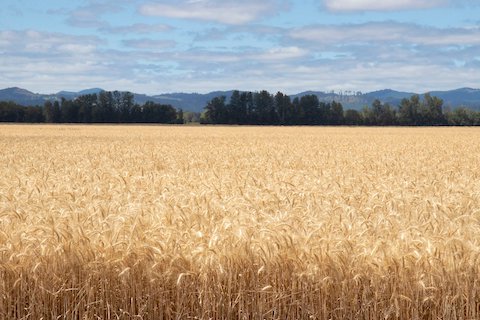ONLINE Dan Fulleton Farm Equipment Retirement Auction
THIS WILL BE AN ONLINE AUCTION Visit bakerauction.com for full sale list and information Auction Soft Close: Mon., March 3rd, 2025 @ 12:00pm MT Location: 3550 Fulleton Rd. Vale, OR […]
Published 11:36 am Thursday, January 23, 2025

USDA’s latest tally shows a 3.6% year-over-year increase in agricultural land held by foreign investors at the end of 2023 represent 3.61% of total privately held agricultural land at the end of 2023.
Reported holdings in 2023 increased 1.58 million acres to a total of 45.85 million acres, according to an analysis by American Farm Bureau Federation.
The increase was primarily driven by investments linked to renewable energy projects, Danny Munch, Farm Bureau economist, said in the report.
The data is based on required reporting under the Agricultural Foreign Investment Disclosure Act of 1978 (AFIDA). Noncompliance carries penalties, but USDA has largely depended on voluntary self-reporting, he said.
In addition to land ownership, USDA’s numbers include long-term land leases of at least 10 years.
Munch was traveling when contacted by Capital Press and not in a position to break down the numbers by ownership.
“I would estimate around 65% or even slightly lower is owned in 2023 with 35% long-term leases,” he told Capital Press.
In 2010 and earlier, foreign ownership of foreign-held U.S agricultural land was likely 90% and higher, he said.
For 2023, Canadian investors represented the largest portion — 33.5% — of foreign-held agricultural land in the U.S. with 15.35 million acres. That equates to 1.21% of all U.S. agricultural land.
Another 13 million of foreign-held agricultural land included:
• The Netherlands with 5.2 million acres
• Italy with 2.7 million acres
• The United Kingdom with 2.6 million acres
• Germany with 2.5 million acres
Together, those four countries account for about 28% of the foreign-held acres. Including Canada, the top five countries represent 62% of the foreign-held land.
The remaining 38% of foreign-held U.S. agricultural land — about 17 million acres — was held by various other countries. That includes nations considered adversarial to the U.S., which held 370,727 acres or 0.03% of all U.S. agricultural land.
Those include:
• China with 277,336 acres, a 27% decline from 2022
• Venezuela with 90,291 acres and no change from 2022
• Iran with 3,030 acres, a 30% decline
• Russia with 11 acres, an 83% decline
• Cuba with 58 acres and no change from 2022
• North Korea with no acres
Timber or forest land accounted for the largest foreign-interest holdings at 21.9 million acres, or 48% of foreign-held agricultural land. That was followed by cropland at 13.2 million acres, or 29%; pasture at 7.7 million acres, or 17%; and other agricultural and non-agricultural (owner or worker housing and rural roads) land at 2.9 million acres, or 6%.
Texas has the most foreign-held agricultural land at 5.7 million acres, 3.6% of its privately held agricultural land. Maine has the second-largest amount with 3.5 million acres, more than 21% of its privately held agricultural land.
In total, 42 states saw an increase in foreign-held agricultural land and five states saw a decrease in 2023.
“As foreign investment in U.S. agricultural land continues to grow and diversify, improving analysis and enforcement will remain critical to ensuring both economic and security considerations are effectively addressed,” Munch said in the report.